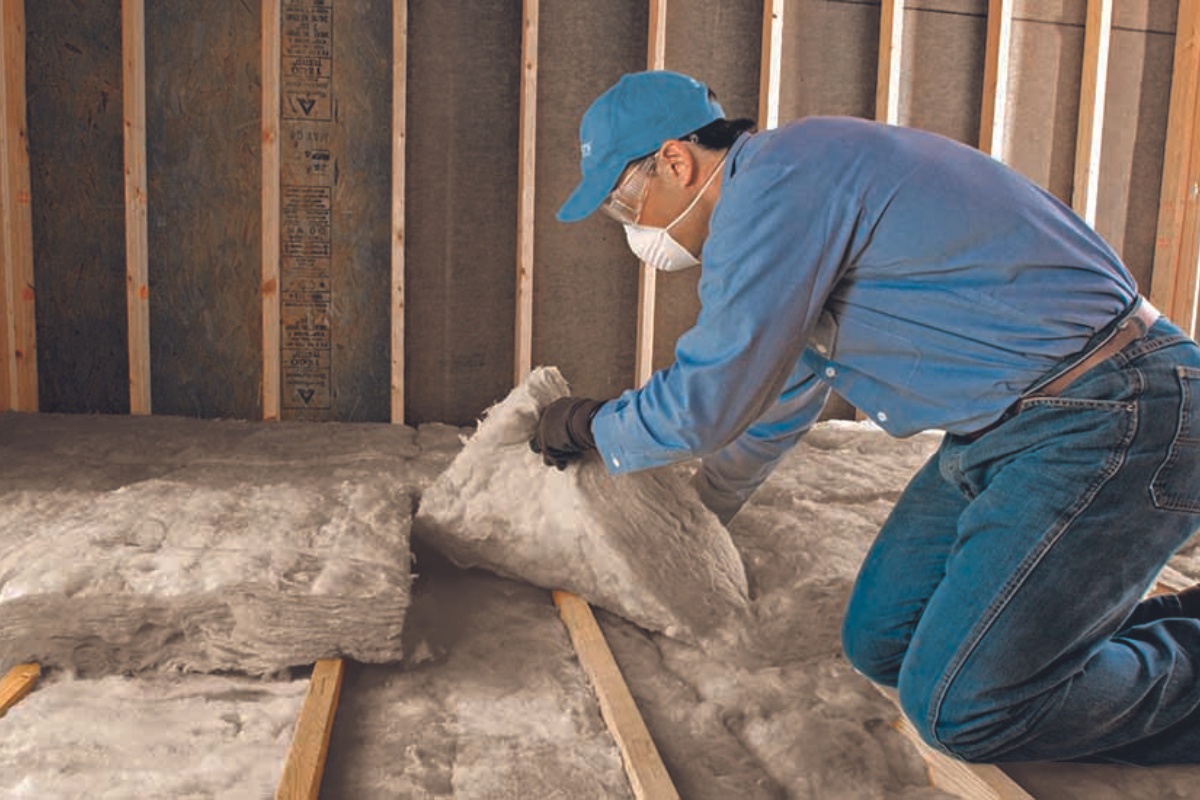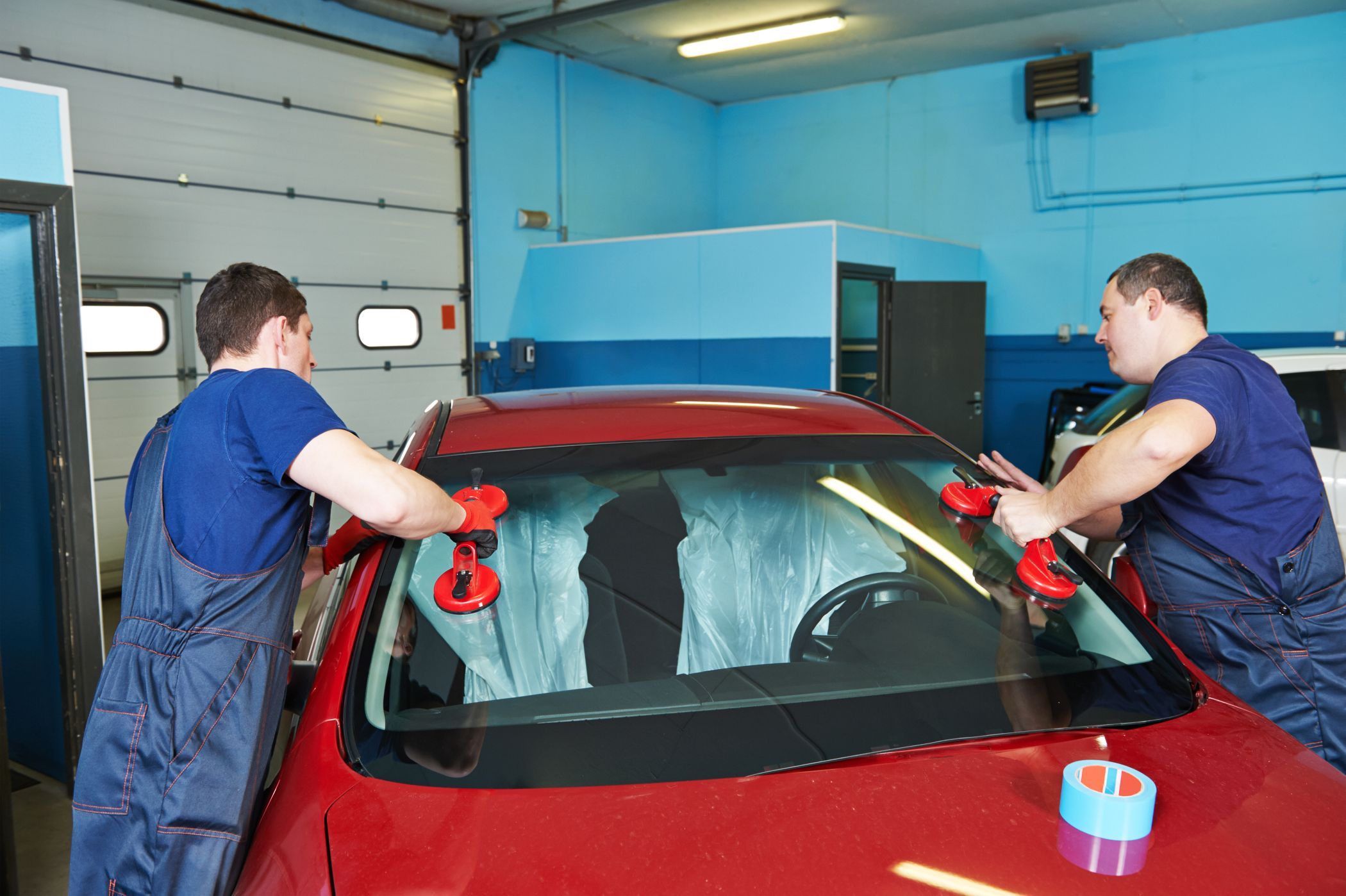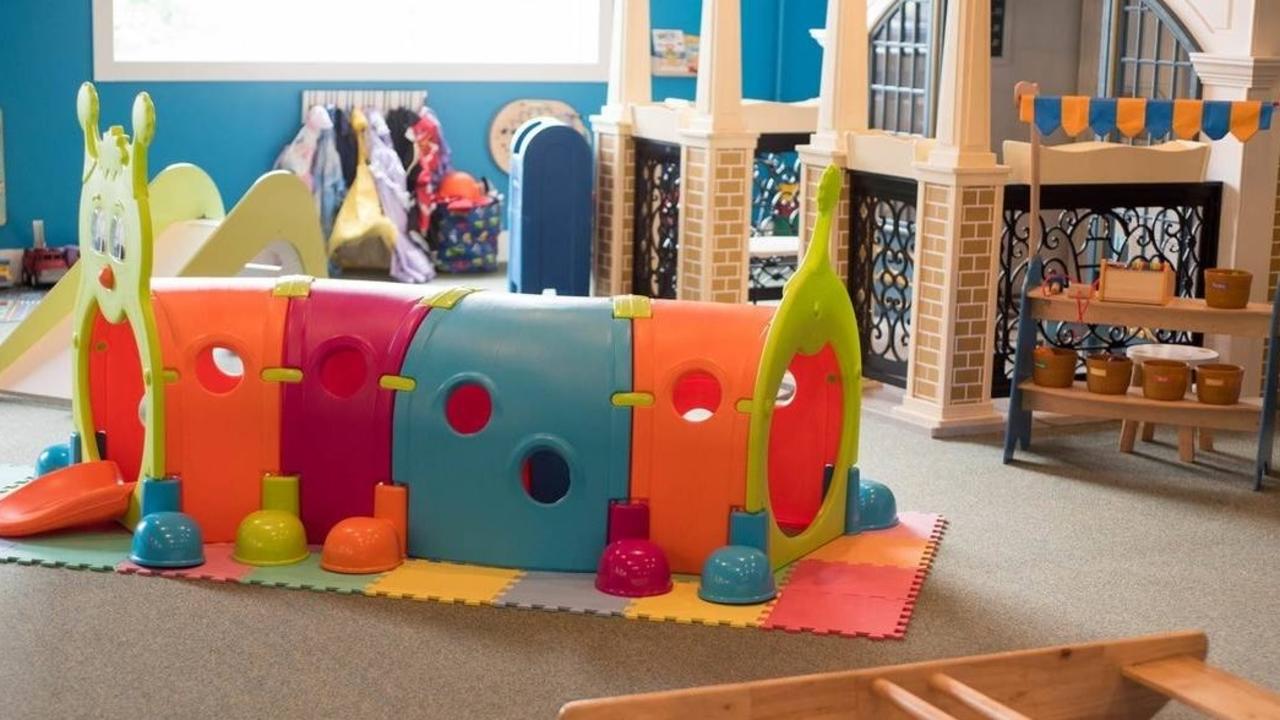

Articles
How To Start A Carpet Cleaning Business
Modified: February 25, 2024
Learn the essential steps and tips for starting a successful carpet cleaning business in this comprehensive guide. Get expert advice and insightful articles to help you get started.
(Many of the links in this article redirect to a specific reviewed product. Your purchase of these products through affiliate links helps to generate commission for Storables.com, at no extra cost. Learn more)
Introduction
Starting a carpet cleaning business can be a rewarding and profitable venture. With the increasing demand for clean and hygienic spaces, there is a growing need for professional carpet cleaning services. Whether you are looking to start a small-scale operation or aim to build a thriving carpet cleaning company, this article will guide you through the essential steps to get your business off the ground.
Carpet cleaning is not just about vacuuming or spot-cleaning. It involves specialized techniques and equipment to effectively remove dirt, stains, and allergens from carpets. As a carpet cleaner, you will be responsible for improving the lifespan of carpets and enhancing the overall cleanliness and appearance of residential or commercial spaces.
Before diving into the carpet cleaning industry, it is important to conduct thorough research and planning. This will help you understand the market demand, competition, and potential target customers in your area. By gathering this information, you can develop a solid business strategy and position yourself for success.
In addition to market research, obtaining the necessary skills and certifications is crucial. While no formal education is required, gaining knowledge and expertise in carpet cleaning methods, stain removal techniques, and equipment operation will enhance your credibility and ensure high-quality service for your customers.
Finding the right equipment and supplies is another vital aspect of starting a carpet cleaning business. Invest in reliable and efficient carpet cleaning machines that suit your specific needs. Additionally, stock up on cleaning solutions, tools, and accessories that are capable of delivering excellent results.
Once you have your equipment and supplies ready, it’s time to set up your carpet cleaning business. Decide on a business structure, register your company, and obtain any necessary licenses and permits. This will give your business a legal foundation and help you establish trust and credibility with your clients.
Creating a solid marketing strategy is essential for attracting customers and growing your business. Utilize various online and offline channels to promote your services, such as creating a professional website, utilizing social media platforms, distributing flyers, and networking with local businesses and homeowners.
Pricing your services competitively and effectively is crucial for success in the carpet cleaning industry. Research the market prices and determine your pricing structure based on factors like the size of the space, level of cleaning required, and additional services offered. It is important to find a balance between profitability and affordability to attract and retain customers.
Customer relationships and excellent service are crucial for building a reputable carpet cleaning business. Focus on providing exceptional service, being responsive to customer inquiries, and going the extra mile to exceed their expectations. Satisfied customers will not only become repeat clients but also refer your services to others, helping you gain more business through positive word-of-mouth.
Managing your finances and tracking expenses is essential for the long-term success of your business. Keep detailed records of your income and expenses, and consider using accounting software to streamline your financial processes. Regularly review your financial statements to assess the profitability of your business and identify areas for improvement.
As your carpet cleaning business grows, explore opportunities for expansion and diversification. Consider offering additional services like upholstery cleaning, tile and grout cleaning, or even water damage restoration. It is important to adapt to the evolving needs of your customers and stay ahead of the competition.
Starting a carpet cleaning business requires hard work, dedication, and a commitment to delivering outstanding service. By following these essential steps, you can establish a successful and profitable carpet cleaning enterprise. So, roll up your sleeves, get ready to make carpets shine, and embark on this exciting entrepreneurial journey!
Key Takeaways:
- Starting a successful carpet cleaning business requires thorough research, planning, and obtaining the necessary skills and certifications. It’s essential to focus on customer relationships, excellent service, and strategic growth strategies to achieve long-term success.
- Managing finances, tracking expenses, and developing a comprehensive marketing strategy are crucial for the financial health and growth of a carpet cleaning business. By staying dedicated to professionalism and continuous learning, entrepreneurs can establish a strong foundation for success.
Read more: How To Start A Chimney Cleaning Business
Step 1: Research and Planning
Before starting any business, conducting thorough research and planning is essential. This step will help you understand the market demand, identify your target customers, and analyze your competition. Here are some key points to consider during the research and planning phase of starting your carpet cleaning business:
- Market Analysis: Begin by researching the demand for carpet cleaning services in your area. Look at demographic data, such as the number of households and businesses, to assess the potential customer base. Identify any particular trends or needs that can help differentiate your business.
- Competition: Study the existing carpet cleaning businesses in your area. Identify their strengths, weaknesses, and pricing strategies. This will help you understand how to position your business and stand out in the market.
- Target Customers: Determine your target customers based on your market analysis. Consider factors such as residential versus commercial, high-end or budget-oriented, and specific geographical areas where there may be a higher demand for your services.
- Services Offered: Decide on the range of services you will provide. This can include carpet cleaning, stain removal, odor elimination, and additional services like upholstery cleaning or tile and grout cleaning. Assess the demand for these services in your target market.
Once you have gathered this information, you can develop a solid business plan. A business plan acts as a roadmap for your carpet cleaning business and helps you stay focused on your goals. It should include the following:
- Company Description: Provide an overview of your business, including your vision, mission, and values. Describe the unique aspects that set your business apart from the competition.
- Services and Pricing: Detail the carpet cleaning services you will offer and the pricing structure for each service. This will help you estimate your costs and determine the profitability of your business.
- Target Market: Clearly define your target market and outline your marketing strategy to reach your ideal customers. Identify the channels you will utilize to promote your services, such as online advertising, social media, or partnering with local businesses.
- Competitive Analysis: Analyze your competition and highlight ways in which your business will differentiate itself. This can include offering additional services, providing exceptional customer service, or utilizing eco-friendly cleaning methods.
- Financial Projections: Create a financial forecast that includes your startup costs, expected revenue, and expenses for the first few years. This will help you assess the feasibility of your business and secure any necessary funding.
By conducting thorough research and developing a comprehensive business plan, you will have a solid foundation for starting your carpet cleaning business. This preparation will enable you to make informed decisions and set realistic goals to ensure your business’s success. So, take the time to gather data, analyze the market, and plan your path to becoming a successful carpet cleaning entrepreneur.
Step 2: Obtaining the Necessary Skills and Certifications
To establish yourself as a reputable carpet cleaning professional, it is important to obtain the necessary skills and certifications. While there are no specific educational requirements for starting a carpet cleaning business, having the right skills and certifications will enhance your credibility and ensure that you provide high-quality services to your clients. Here are some essential steps to help you acquire these skills and certifications:
- Industry Training: Seek out training programs or courses that specialize in carpet cleaning. These programs can provide you with a solid foundation of knowledge and practical skills. Look for reputable training providers that offer hands-on experience, as this will allow you to practice proper techniques and learn about different carpet types and cleaning methods.
- Stain Removal Techniques: Study various stain removal techniques for different types of stains, such as wine, pet stains, and grease. Knowing how to effectively remove stains will set you apart from your competitors and ensure customer satisfaction.
- Equipment Operation: Familiarize yourself with the operation of carpet cleaning equipment, including both portable and truck-mounted machines. Understand the proper use of cleaning solutions, water temperature, and pressure settings to achieve optimal results without causing damage to carpets.
- Health and Safety: Learn about health and safety guidelines related to the use of cleaning chemicals, equipment, and working in different environments. Understanding safety protocols will protect both you and your clients.
In addition to acquiring skills, obtaining relevant certifications can help boost your business and gain trust from your customers. Here are some certifications that are widely recognized in the carpet cleaning industry:
- Institute of Inspection, Cleaning and Restoration Certification (IICRC): The IICRC offers certifications in carpet cleaning, upholstery cleaning, and other related fields. These certifications demonstrate your commitment to industry standards and best practices.
- Carpet and Rug Institute (CRI): The CRI offers the Seal of Approval program, which certifies carpet cleaning products, equipment, and service providers. Having the CRI Seal of Approval can differentiate your business and reassure customers of your expertise.
- Occupational Safety and Health Administration (OSHA): While not specific to carpet cleaning, OSHA certifications can demonstrate your commitment to workplace safety. Certification in areas such as hazard communication and bloodborne pathogens can be valuable for handling cleaning chemicals and maintaining a safe work environment.
By obtaining the necessary skills and certifications, you will be equipped with the knowledge and expertise to provide professional and effective carpet cleaning services. These qualifications will instill confidence in your clients and set your business apart from competitors who may not have invested in professional training. So, take the time to learn and acquire the skills and certifications needed to excel in the carpet cleaning industry.
Step 3: Finding the Right Equipment and Supplies
Having the right equipment and supplies is essential to deliver efficient and effective carpet cleaning services. Investing in high-quality and reliable equipment will not only enhance the results you achieve but also contribute to the overall professionalism and credibility of your business. Here are some key considerations when finding the right equipment and supplies for your carpet cleaning business:
- Carpet Cleaning Machines: Choose a carpet cleaning machine that meets your specific needs. There are two main types: portable and truck-mounted machines. Portable machines are versatile and can be used for both residential and commercial spaces, while truck-mounted machines offer more power and efficiency for larger areas. Consider factors such as size, weight, power, and ease of use when making your decision.
- Accessories and Attachments: Look for machines that come with a range of accessories and attachments. These can include different types of carpet wands, upholstery tools, and specialty attachments for cleaning stairs or hard-to-reach areas. Having a variety of accessories will enable you to cater to different cleaning needs and provide a more comprehensive service.
- Cleaning Solutions: Research and select cleaning solutions that are safe, effective, and appropriate for different types of carpets and stains. It is important to use eco-friendly and non-toxic options whenever possible to promote a healthy and sustainable environment.
- Stain Removers and Spot Treatments: Stock up on stain removers and spot treatments that are specifically formulated to tackle common carpet stains like wine, coffee, pet urine, and grease. Having a range of effective stain removers will enable you to effectively address different types of stains and provide excellent service to your clients.
- Equipment Maintenance: Consider the maintenance requirements of the equipment you choose. Look for machines that are easy to clean, maintain, and repair. Regular maintenance will ensure the longevity and optimal performance of your equipment.
In addition to the equipment, you will also need various supplies to support your carpet cleaning operations. These supplies may include:
- Protective Gear: Invest in personal protective equipment (PPE) such as gloves, goggles, and masks to ensure your safety while handling cleaning chemicals and operating machinery.
- Cleaning Tools: Purchase brushes, scrubbers, and squeegees for pre-treating stains and agitating the carpet fibers. These tools will aid in loosening dirt and grime before using the carpet cleaning machine.
- Cleaning Pads and Towels: Have a good supply of cleaning pads and towels for blotting and drying carpets after cleaning. Microfiber towels are particularly effective at absorbing moisture and leaving a clean finish.
- Storage and Organization: Consider storage solutions for your equipment and supplies. Shelving or storage bins can help keep your workspace tidy and ensure that everything is easily accessible when needed.
When sourcing your equipment and supplies, research reputable suppliers and compare prices to find the best deals without compromising on quality. Consider reaching out to manufacturers, attending industry trade shows, or joining professional organizations to connect with suppliers and stay updated on the latest innovations in carpet cleaning technology.
By investing in the right equipment and supplies, you will be well-prepared to deliver exceptional carpet cleaning services. Take the time to research and choose equipment that suits your needs and select high-quality cleaning solutions and supplies. Remember, quality equipment and supplies are an investment in the success and reputation of your carpet cleaning business.
Step 4: Setting up Your Carpet Cleaning Business
Setting up your carpet cleaning business involves a series of important steps to establish a strong foundation for success. From choosing the right business structure to obtaining the necessary licenses and permits, here are the key considerations for setting up your carpet cleaning business:
- Business Structure: Determine the legal structure of your business. Common options include sole proprietorship, partnership, limited liability company (LLC), or corporation. Research each structure’s advantages and disadvantages to select the one that best suits your needs.
- Business Name and Registration: Choose a unique and memorable name for your carpet cleaning business. Check with your local authorities or online resources to ensure that the name is not already in use. Register your business name with the appropriate government agency, such as your county clerk’s office or state-level business registration department.
- Business Licenses and Permits: Research and obtain any required licenses and permits to legally operate your carpet cleaning business. This may include a general business license, cleaning service-specific permits, or local permits for operating a home-based business.
- Insurance Coverage: Purchase appropriate insurance to protect your business from potential risks. Consider general liability insurance, which covers accidents or property damage, and worker’s compensation insurance if you plan to hire employees. Consult an insurance professional to determine the necessary coverage for your specific business needs.
- Business Location and Equipment Storage: Determine whether you will operate from a commercial space or as a home-based business. If operating from a commercial space, find a location that is convenient for your target market. If running a home-based business, ensure that you have sufficient space to store equipment and operate efficiently.
- Equipment Purchase or Lease: Decide whether you will purchase or lease your carpet cleaning equipment. Purchasing can provide long-term cost savings but requires a significant upfront investment. Leasing allows you to access the latest equipment without a large capital outlay but may have higher monthly costs.
- Supplier Relationships: Establish relationships with suppliers for your cleaning solutions, supplies, and equipment maintenance needs. Consider building partnerships with multiple suppliers to ensure access to quality products and competitive pricing.
- Accounting and Bookkeeping: Set up an accounting system to track your income and expenses. This includes recording sales, tracking invoices, and monitoring cash flow. Consider using accounting software or hiring a professional bookkeeper to ensure accuracy and efficiency in managing your finances.
As you navigate through these steps, it is important to consult with legal and financial professionals familiar with the requirements for starting a carpet cleaning business in your area. They can provide guidance on specific legal and tax considerations and help ensure that you comply with any regulations or local ordinances.
By setting up your carpet cleaning business properly, you establish a solid foundation for growth and success. Take the time to research and complete each step diligently. Doing so will enable you to operate legally, protect your business, and focus on delivering excellent carpet cleaning services to your valued clients.
Read more: How To Start A Furniture Business
Step 5: Developing a Marketing Strategy
A well-developed marketing strategy is essential for attracting customers and growing your carpet cleaning business. It helps you showcase your services, build brand awareness, and establish a strong presence in the market. Here are key steps to help you develop an effective marketing strategy:
- Identify Your Target Market: Define your ideal customer base. Consider factors such as demographics, geographic location, and their specific needs for carpet cleaning. By understanding your target market, you can tailor your marketing efforts to reach the right audience.
- Create a Professional Website: In today’s digital age, a professional website is crucial for establishing credibility and attracting customers. Include information about your services, contact details, and customer testimonials. Optimize your website for search engines to improve your online visibility.
- Utilize Search Engine Optimization (SEO): Incorporate relevant keywords throughout your website to improve your ranking in search engine results. Conduct keyword research to identify the terms your potential customers are searching for and include them strategically in your website content.
- Social Media Presence: Create social media profiles on platforms that your target audience frequents, such as Facebook, Instagram, or Twitter. Share engaging content, before and after photos, cleaning tips, and customer testimonials. Engage with your audience by responding to comments and inquiries promptly.
- Online Advertising: Consider using online advertising platforms like Google Ads or Facebook Ads to reach a wider audience. Utilize targeting options to refine your audience based on location, demographics, and interests. Create compelling ad copy and monitor the performance of your ads to optimize your campaigns.
- Local Networking: Build relationships with local businesses and professionals who may refer customers to you. Connect with real estate agents, interior designers, property managers, and office building managers. Attend local networking events and join professional organizations to increase your visibility within the community.
- Email Marketing: Collect email addresses from your customers and website visitors to build a subscriber list. Send out regular newsletters or promotional emails to keep them informed about your services, special offers, or seasonal discounts. Provide valuable content that educates and engages your audience.
- Online Reviews and Testimonials: Encourage satisfied customers to leave positive reviews on platforms like Google, Yelp, or Angie’s List. These reviews can influence potential customers and build trust in your services. Display testimonials prominently on your website and social media profiles to showcase your credibility.
- Printed Marketing Materials: Design and distribute professional-looking business cards, flyers, and brochures. Place them strategically in local businesses, community bulletin boards, or mail them directly to targeted neighborhoods. Ensure your marketing materials clearly communicate the benefits of your services and include your contact information.
As you develop your marketing strategy, remember to track and analyze the effectiveness of your efforts. Monitor website traffic, online ad performance, and customer inquiries to refine your approach over time. Adapt and experiment with different marketing tactics to see what works best for your business.
By implementing a well-rounded marketing strategy, you can reach a wider audience, attract more customers, and establish a strong brand presence. Consistency and persistence in your marketing efforts will pay off and contribute to the continued growth and success of your carpet cleaning business.
Tip: Research your local market to understand the demand for carpet cleaning services, identify your target customers, and assess the competition before starting your business.
Step 6: Pricing Your Services
Setting the right prices for your carpet cleaning services is crucial for the success of your business. Pricing that is too high may deter potential customers, while pricing that is too low may undermine your profitability. Here are some key factors to consider when determining the pricing structure for your services:
- Market Research: Conduct thorough market research to understand the average pricing for carpet cleaning services in your area. Consider factors such as the size of the space, the level of cleaning required, and any additional services offered by competitors.
- Cost Calculation: Calculate your costs to ensure that your pricing covers your expenses and allows for a reasonable profit margin. Take into account factors such as equipment maintenance and depreciation, cleaning solutions, labor costs, and overhead expenses.
- Value-Added Services: Determine if you will offer any value-added services that can justify higher pricing. This can include services like stain removal, odor elimination, or specialized treatments for allergies or pet-related issues.
- Price Structure: Decide on a pricing structure that aligns with the services you offer. Common options include charging per square foot, charging per room, or having a tiered pricing system based on the level of cleaning required.
- Competitive Differentiation: Consider how you can differentiate your business from competitors in terms of service quality, customer experience, and additional offerings. This can justify slightly higher pricing as customers perceive the added value.
- Profitability and Growth: Aim to set a pricing structure that allows for profitability and growth. Your prices should not only cover expenses but also provide room for investments in marketing, equipment upgrades, and expanding your business.
- Customer Perception: Keep in mind your target market and the perception they may have regarding pricing. Pricing that is too low may raise questions about quality, while pricing that is too high may lead customers to seek more affordable alternatives.
- Special Offers and Discounts: Consider offering special promotions or discounts to attract new customers or encourage repeat business. Use these strategically to generate interest and maintain customer loyalty.
It’s important to strike a balance between profitability and affordability. By finding the right pricing sweet spot, you can attract customers while ensuring sustainability and growth for your carpet cleaning business.
Once you have developed your pricing structure, monitor its performance and be open to making adjustments over time. Measure customer response, track sales data, and gather feedback to refine and optimize your pricing strategy. Regularly reevaluate your costs and market conditions to ensure your prices remain competitive and profitable.
Remember, pricing is not a one-size-fits-all approach. It requires careful consideration of market factors, costs, and the value you provide to customers. By setting the right prices for your carpet cleaning services, you can maximize your profitability and establish a fair and sustainable model for your business.
Step 7: Establishing Customer Relationships and Providing Excellent Service
Establishing strong customer relationships and providing excellent service is key to the long-term success of your carpet cleaning business. Satisfied customers not only become repeat clients but also act as advocates, referring your services to others. Here are some essential steps to focus on in order to build customer relationships and provide exceptional service:
- Professionalism and Reliability: Build a reputation for professionalism and reliability by always being punctual, well-prepared, and respectful towards your customers. Arrive on time for appointments and communicate effectively to ensure a positive experience from start to finish.
- Clear Communication: Maintain open and transparent communication with your customers to ensure their expectations are met. Clearly explain what your services entail, including any limitations or potential outcomes. Keep them informed about the cleaning process and address any questions or concerns they may have.
- Personalized Approach: Treat each customer as an individual and tailor your services to their specific needs. Take the time to understand their concerns, preferences, and any specific instructions they may have. Provide personalized recommendations and go the extra mile to exceed their expectations.
- Attention to Detail: Pay attention to every detail during the cleaning process. Take care to properly prepare the space before cleaning, ensure thorough and consistent cleaning across all areas, and perform a final inspection to address any missed spots. Strive for perfection in every job you undertake.
- Quality Assurance: Offer a satisfaction guarantee to instill confidence in your customers. Let them know that if they are not satisfied with the results, you will take the necessary steps to rectify the issue. Provide a follow-up service if needed or offer a refund or discount on future services.
- Customer Feedback: Actively seek feedback from your customers to continuously improve your services. Encourage them to provide reviews and testimonials on platforms like Google, Yelp, or your website. Use their feedback to make necessary adjustments and demonstrate your commitment to their satisfaction.
- Professional Development: Stay updated on the latest carpet cleaning techniques, equipment, and industry trends. Continuing education and professional development will enable you to provide the best possible service and stay ahead of the competition. Attend seminars, workshops, and industry conferences to expand your knowledge and skills.
- Post-Service Follow-Up: Follow up with your customers after the service to ensure their continued satisfaction. This can be a simple phone call, email, or a personalized thank-you note. It shows that you value their business and are committed to providing ongoing support and excellent customer care.
Building strong customer relationships and providing excellent service requires consistent effort and attention to detail. Strive to not only meet but exceed customer expectations in every interaction. Word-of-mouth recommendations and positive online reviews will become powerful marketing tools for your business.
Remember, happy customers are more likely to become repeat clients and refer your services to others. By establishing customer relationships built on trust, professionalism, and exceptional service delivery, you will create a solid foundation for the long-term success and growth of your carpet cleaning business.
Step 8: Managing Finances and Tracking Expenses
Managing your finances and tracking expenses is essential for the financial health and stability of your carpet cleaning business. Proper financial management allows you to make informed decisions, track profitability, and ensure that your business remains viable in the long run. Here are key steps to help you effectively manage your finances:
- Separate Personal and Business Finances: Open a separate bank account specifically for your business. This will help you track income and expenses more efficiently and simplify your bookkeeping and tax reporting processes.
- Accounting System: Choose an accounting system that suits the needs of your business. Consider using accounting software, such as QuickBooks or Xero, to streamline your financial management. This software can help you track income, expenses, and cash flow, generate financial reports, and simplify tax preparation.
- Invoice and Payment Tracking: Create and send professional invoices to your clients for services rendered. Utilize accounting software or online invoicing platforms to track invoice status and payment history. Follow up with clients for any outstanding payments.
- Expense Tracking: Record and categorize all business expenses accurately and consistently. This includes bills, equipment purchases, cleaning supplies, marketing costs, and any other expenditures related to your carpet cleaning business. Keep detailed records and save receipts for future reference and tax purposes.
- Budgeting: Develop a budget for your business based on your expected income and expenses. This will provide a clear financial roadmap and help you allocate resources effectively. Regularly review your budget and compare it against actual income and expenses to identify any variances and make necessary adjustments.
- Tax Compliance: Stay updated on the tax obligations and regulations specific to your location and business structure. Consider consulting with a tax professional to ensure that you comply with all applicable tax laws and take advantage of any tax deductions or benefits available to you.
- Cash Flow Management: Maintain a close eye on your cash flow to ensure that your business has sufficient funds to cover expenses and invest in growth. Monitor your accounts receivable and accounts payable to anticipate any potential cash flow challenges and take proactive steps to manage them.
- Financial Analysis: Regularly analyze your financial statements, such as your profit and loss statement and balance sheet. This will help you gain insights into your business’s financial performance, identify trends, and make informed decisions to improve profitability and efficiency.
- Consulting Professionals: Consider working with a financial advisor or accountant who specializes in small businesses. They can provide valuable guidance on financial planning, tax strategies, and help you identify opportunities for improvement in your financial management processes.
By effectively managing your finances and tracking expenses, you can make informed decisions, ensure financial stability, and set the stage for long-term success. Regularly review and update your financial records and stay proactive in managing your business’s financial health.
Remember, solid financial management is essential for making strategic decisions, identifying areas of improvement, and maximizing the profitability of your carpet cleaning business.
Read more: How To Start A Construction Business
Step 9: Growing Your Carpet Cleaning Business
After establishing a strong foundation and providing excellent service to your customers, it’s time to focus on growing your carpet cleaning business. By implementing strategic growth strategies and expanding your reach, you can increase your customer base and revenue. Here are key steps to help you grow your carpet cleaning business:
- Referrals and Customer Loyalty: Encourage satisfied customers to refer your services to their friends, family, and colleagues. Offer referral incentives or loyalty programs to reward customers for their recommendations and encourage repeat business.
- Online Presence: Continue to strengthen your online presence through regular updates on your website and social media platforms. Engage with your audience by sharing relevant content, responding to inquiries, and showcasing your expertise. Consider investing in search engine optimization (SEO) strategies to improve your website’s visibility and attract more organic traffic.
- Online Advertising: Utilize online advertising platforms such as Google Ads or social media advertising to reach a wider audience. Target specific demographics and geographical areas to maximize the effectiveness of your ads. Continuously track and optimize your campaigns based on performance data.
- Expand Service Offerings: Consider expanding your service offerings to attract a broader range of customers. This can include adding related services such as upholstery cleaning, tile and grout cleaning, or water damage restoration. Assess the demand for these services in your market and ensure you have the necessary skills and equipment to deliver high-quality results.
- Strategic Partnerships: Establish strategic partnerships with complementary businesses or service providers. This can include real estate agents, property managers, or interior designers. Network with these professionals and explore opportunities for referrals or collaboration.
- Targeted Marketing Campaigns: Develop targeted marketing campaigns to reach specific customer segments. For example, you may create campaigns focused on residential customers, commercial clients, or specific neighborhoods or industries. Tailor your messaging and offers to resonate with each target audience.
- Networking and Community Engagement: Participate in local community events, trade shows, and networking groups to expand your professional network. Engage with business owners, property managers, and community members to build relationships and generate leads.
- Customer Reviews and Testimonials: Continuously collect and showcase positive customer reviews and testimonials. Display them on your website, social media profiles, and marketing materials. Positive reviews can build trust and credibility, making potential customers more likely to choose your services.
- Invest in Technology and Equipment: Stay updated with the latest technology and equipment trends in the carpet cleaning industry. Investing in modern and efficient equipment can improve your productivity, enhance the quality of your service, and differentiate you from competitors.
Remember, growing your carpet cleaning business requires a proactive and strategic approach. Continuously monitor your efforts, analyze results, and adapt your strategies as needed. Stay focused on delivering exceptional service, building strong customer relationships, and expanding your reach through targeted marketing and networking activities.
As your business grows, don’t forget to evaluate and refine your operational processes to ensure scalability and efficiency. Stay committed to ongoing professional development and stay up-to-date with industry trends to maintain your competitive edge.
By implementing these growth strategies and staying dedicated to excellence, you will pave the way for the continued success and expansion of your carpet cleaning business.
Conclusion
Starting and growing a carpet cleaning business requires a combination of careful planning, skill development, and strategic marketing. By following the essential steps outlined in this guide, you can establish a strong foundation and position your business for long-term success.
Research and planning lay the groundwork for understanding your market, competition, and target customers. Obtaining the necessary skills and certifications ensures that you can deliver high-quality carpet cleaning services that meet industry standards. Finding the right equipment and supplies allows you to effectively tackle various cleaning tasks and achieve exceptional results.
Setting up your business involves legal considerations, such as choosing a business structure and obtaining the required licenses and permits. Developing a comprehensive marketing strategy helps you attract customers, build your brand, and stand out from the competition. Pricing your services appropriately ensures profitability while remaining competitive in the market.
Establishing strong customer relationships and delivering excellent service are vital for customer satisfaction and loyalty. By providing personalized and professional service, you can build a reputation that leads to positive word-of-mouth referrals and repeat business.
Managing your finances and tracking expenses is essential for maintaining the financial health of your business. Effective financial management allows you to make informed decisions, allocate resources wisely, and stay on top of your profitability.
As you grow your carpet cleaning business, it’s important to continually evaluate and refine your strategies. Expanding your service offerings, networking, and utilizing targeted marketing campaigns can help you reach new customers and increase your revenue. Embracing technology and staying up-to-date with industry trends will position you as a leader in the carpet cleaning industry.
In conclusion, starting and growing a carpet cleaning business requires dedication, hard work, and a commitment to providing exceptional service. By following the steps outlined in this guide, you can navigate the challenges and capitalize on the opportunities in the industry. Stay focused on continuous learning, customer satisfaction, and adapting to the evolving needs of your customers.
So, roll up your sleeves, apply the knowledge and strategies you’ve gained, and embark on the rewarding journey of starting and growing your carpet cleaning business. With determination and a commitment to excellence, the sky’s the limit for your success in this thriving industry.
Frequently Asked Questions about How To Start A Carpet Cleaning Business
Was this page helpful?
At Storables.com, we guarantee accurate and reliable information. Our content, validated by Expert Board Contributors, is crafted following stringent Editorial Policies. We're committed to providing you with well-researched, expert-backed insights for all your informational needs.













